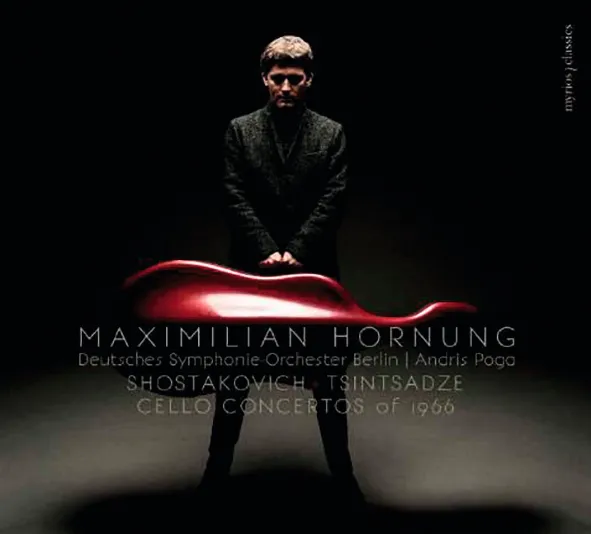
Shostakovich Cello Concerto No. 2; Tsintsadze Cello Concerto No. 2 in Five Episodes Maximilian Hornung (cello); Deutsches Symphonie-Orchester Berlin/Andris Poga Myrios MYR023 60:19 mins
This extremely enterprising coupling presents two Soviet Cello Concertos that date from 1966. Both works share similar emotional preoccupations and in particular explore a dark and reflective musical landscape punctuated only from time to time by brighter or more frenzied episodes. Of the two, the Second Concerto by Georgian composer Sulkhan Tsintsadze, here receiving its first outing on CD, seems more closely allied to folk idioms with percussive writing in certain passages that is vaguely reminiscent of Bartók. Expertly written for the cello, which happened to be the composer’s principal instrument, the Concerto is quite a discovery, Tsintsadze exerting impressive mastery of the orchestra and devising strongly defined thematic material throughout its five interlinked movements. Maximilian Hornung relishes the considerable technical challenges of Tsintsadze’s writing and with sterling support from the Deutsches Symphonie-Orchester Berlin under Andris Poga, delivers a fine performance that is sure to win new converts to this unfairly neglected composer.
There’s also much to admire in their account of Shostakovich’s Second Concerto. The vivid recording, which places the cello very much within the orchestral fabric, works particularly effectively in the opening movement where Hornung’s sombre shaping of the desolate melodic lines is powerfully supported by the brooding lower registers of the orchestra. Hornung maps out the trajectory of each movement with a clear sense of direction, carefully building up to the big climaxes, yet still maintaining sufficient tension in the more introspective passages. The only comparative disappointment is the slightly tame-sounding horn fanfares that follow on from Hornung’s grotesque and increasingly sinister projection of the central Allegretto.
Erik Levi